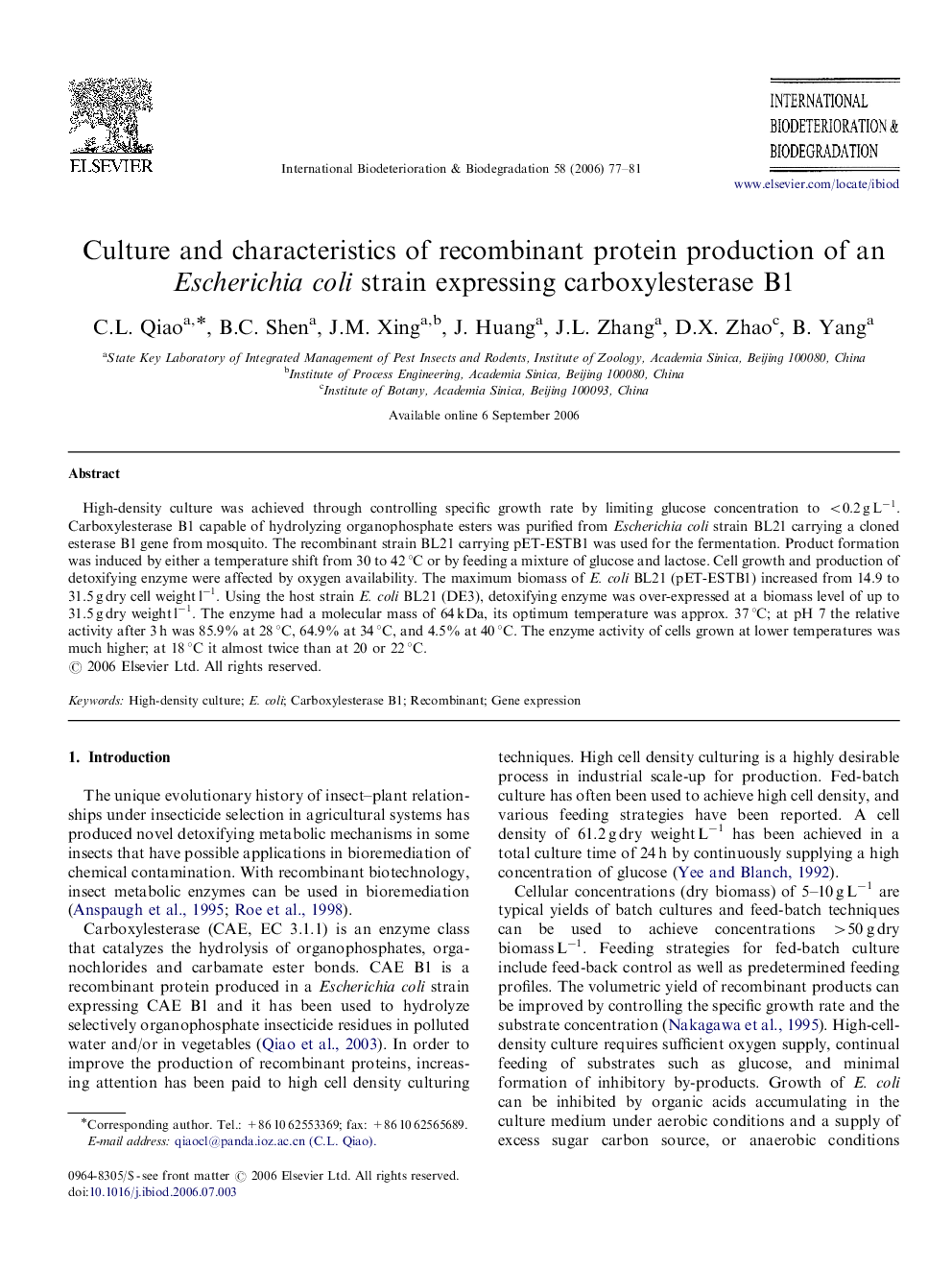| Article ID | Journal | Published Year | Pages | File Type |
|---|---|---|---|---|
| 4366065 | International Biodeterioration & Biodegradation | 2006 | 5 Pages |
High-density culture was achieved through controlling specific growth rate by limiting glucose concentration to <0.2 g L−1. Carboxylesterase B1 capable of hydrolyzing organophosphate esters was purified from Escherichia coli strain BL21 carrying a cloned esterase B1 gene from mosquito. The recombinant strain BL21 carrying pET-ESTB1 was used for the fermentation. Product formation was induced by either a temperature shift from 30 to 42 °C or by feeding a mixture of glucose and lactose. Cell growth and production of detoxifying enzyme were affected by oxygen availability. The maximum biomass of E. coli BL21 (pET-ESTB1) increased from 14.9 to 31.5 g dry cell weight l−1. Using the host strain E. coli BL21 (DE3), detoxifying enzyme was over-expressed at a biomass level of up to 31.5 g dry weight l−1. The enzyme had a molecular mass of 64 kDa, its optimum temperature was approx. 37 °C; at pH 7 the relative activity after 3 h was 85.9% at 28 °C, 64.9% at 34 °C, and 4.5% at 40 °C. The enzyme activity of cells grown at lower temperatures was much higher; at 18 °C it almost twice than at 20 or 22 °C.
